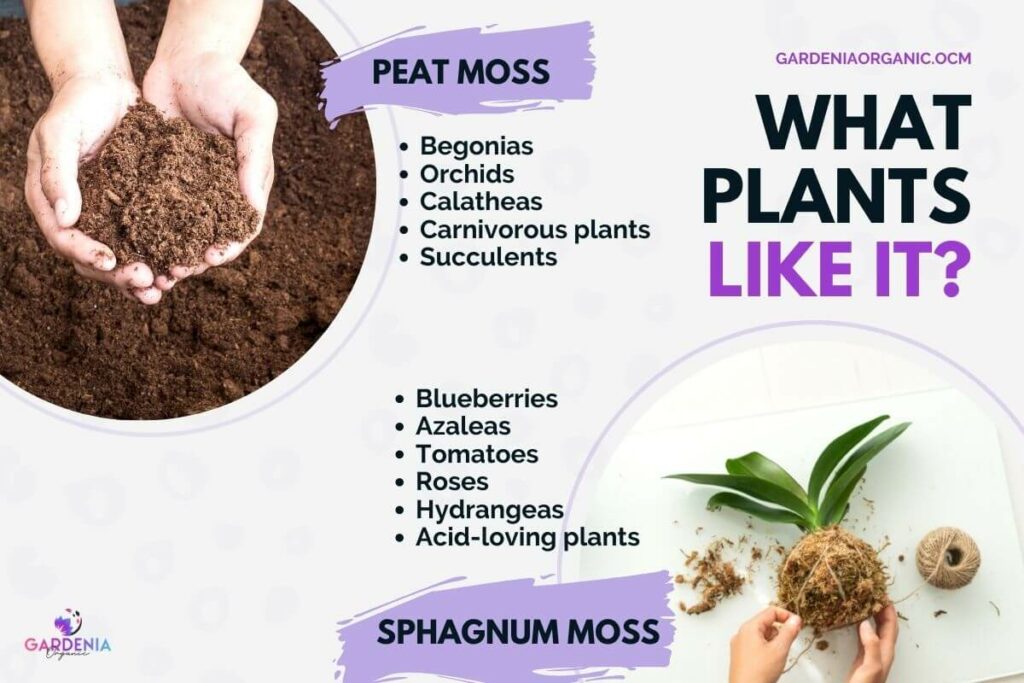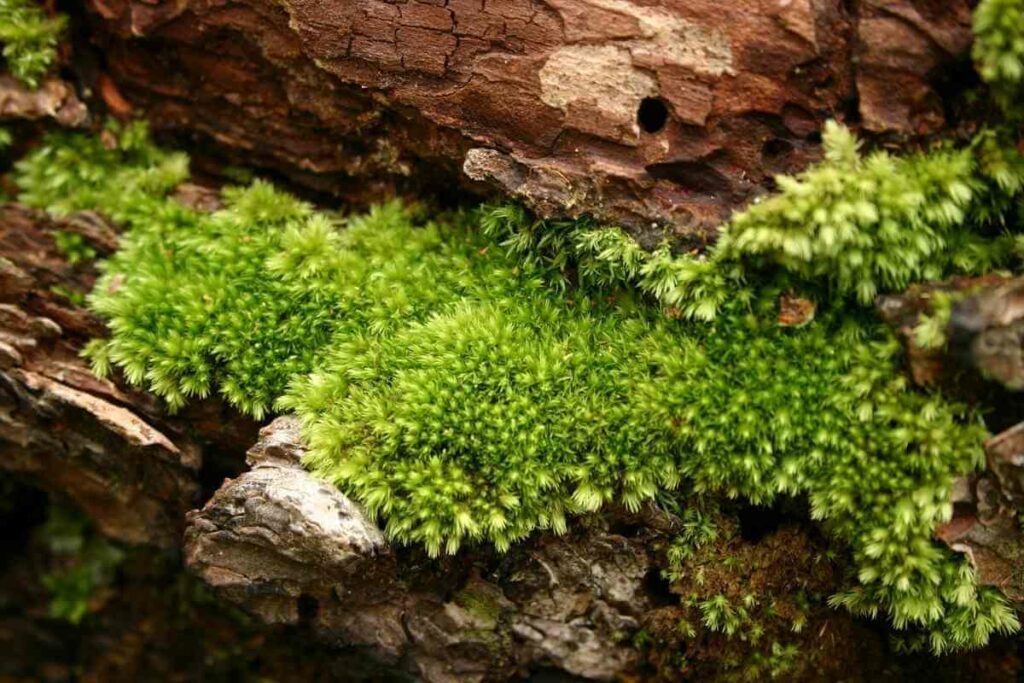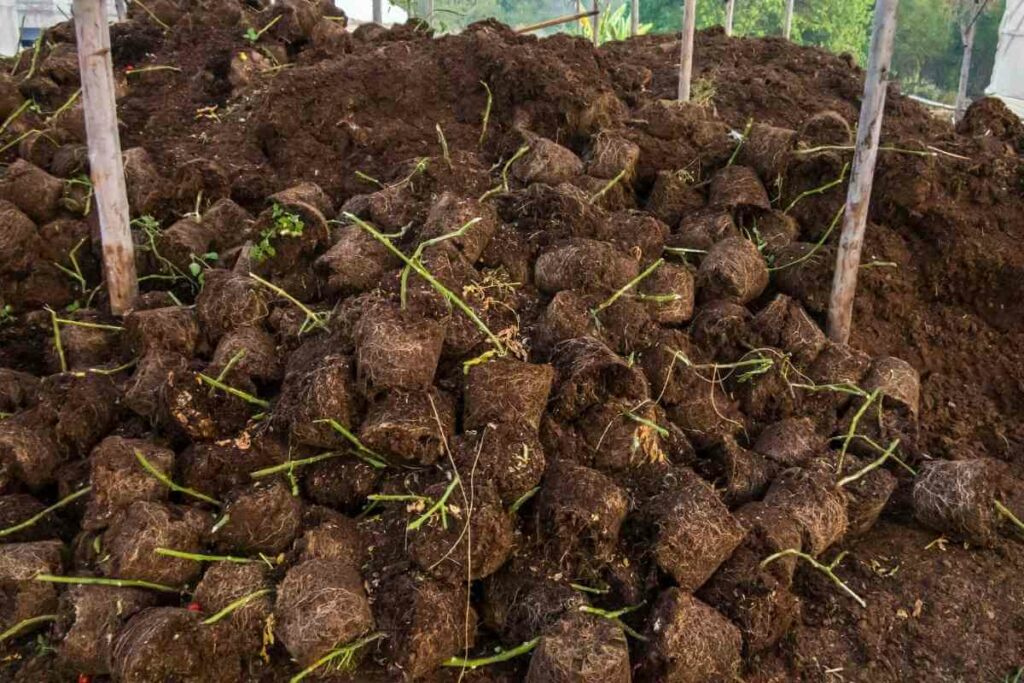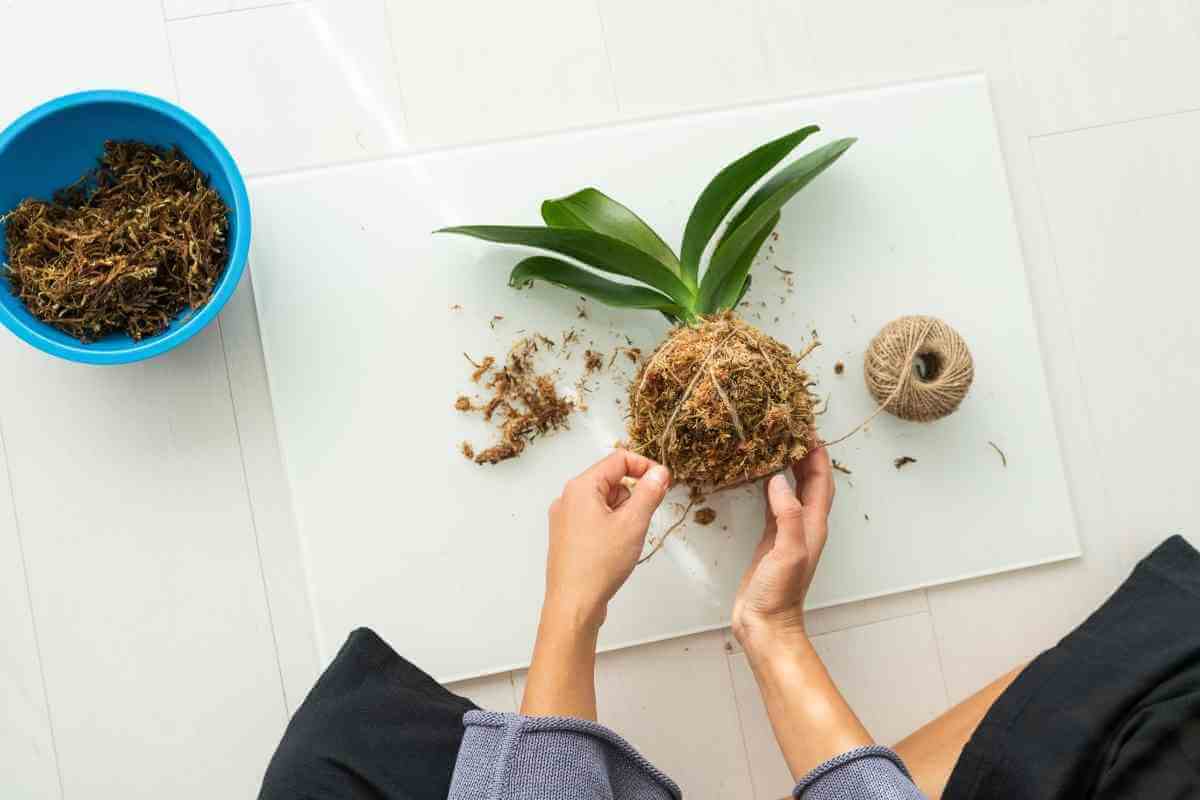Many people use sphagnum moss and peat moss interchangeably, but they aren’t the same thing.
They are two different stages of the same plant and have very different characteristics.

What should you use; peat moss or sphagnum moss?
Before buying either type of moss, you need to know exactly what you are growing, and what type of growing you want to do. Sphagnum moss is better when used as a growing medium for seed starters and soilless growing, but peat moss is better as a soil amendment and for growing plants that love acidic soil.
What Is Sphagnum Moss
Sphagnum moss is a moss that grows on the surface of a swamp.

It thrives in damp climates and is usually harvested from:
- Michigan
- Canada
- New Zealand
- Ireland
- and Scotland
Only 3% of the world’s surface is covered with moss bogs, and these have taken thousands of years to develop.
After being harvested, it typically takes the bog five to twenty years to return to its balanced ecosystem.
This is why it has to be harvested carefully to protect the ecosystem, and to make sure that more sphagnum moss continues to grow.
After the sphagnum moss has been harvested it is dehydrated and packaged.
You can buy it in:
- craft stores
- stores that sell gardening supplies
- greenhouses
- and online
You can buy it in its natural spongy, long-fibered form, or you can purchase it shredded.
It is easy to find small bags of sphagnum moss just about anywhere.
Sphagnum Moss Characteristics:
- Neutral pH
- Can hold 20 times its weight in water
- Pliable growing material
- Spongy texture
- Pure moss with no other plant material
What Is Peat Moss
If sphagnum moss is the moss that grows on the surface of a swamp or bog, then what is peat moss?

As sphagnum moss dies and decays, it settles at the bottom of the bog. It takes 15 to 25 years for a single inch of peat moss to form at the bottom of a bog.
It takes so long because there is no oxygen to speed up the decomposition process.
To harvest the peat moss:
- The sphagnum moss has to be cleared out first
- Then the entire bog has to be drained and dried.
- The peat moss in the bottom is then vacuumed out, dried, sifted, and compressed into bales to be sold.
Sifting the peat moss removes some of the other matter, but there will still be bugs and other decaying plants in the mix.
The entire process is pretty damaging, and even though sphagnum moss and peat moss are renewable, peat moss is not considered a renewable resource.
After harvesting the peat moss, it is very unlikely that a bog will ever form again in that area.
This process also makes peat moss expensive, but peat moss is a great soil amendment.
There are alternatives to using peat if the environmental and economic factors are too much for your garden.
Peat moss is a less expensive amendment in potting and garden soils.
It can help loosen clay, it is wonderful for water retention, and acid-loving plants love the acidity in the peat moss.
There are alternatives though if you don’t like the environmental factors or the price tag that peat moss comes with.
Peat Moss Characteristics:
- Acidic; pH of about 3.5 to 4
- Can hold 10 times its weight in water
- Devoid of nutrients
- Sterile from the decaying process and further drying
- Dark brown, fibrous texture
What Should You Use
| Moss Type | General Use | What Plants Like It |
|---|---|---|
| Sphagnum Moss | Soilless growing, hanging baskets | Begonias, orchids, calatheas, carnivorous plants, succulents |
| Peat Moss | Soil amendment for gardens, raised garden beds, and potted plants | Blueberries, azaleas, tomatoes, roses, hydrangeas, acid-loving plants |
Sphagnum Moss

Soilless Growing
Soil can become soggy, which can kill plants like orchids or succulents.
Planting those directly in sphagnum moss without any soil means there won’t be any extra water that can drown the roots.
Sphagnum moss is also used in soilless form building. Moss balls, wreaths, and frame builds can use sphagnum moss instead of soil.
Hanging Baskets
Those hanging flower baskets that pop up just in time for Mother’s Day every year also use sphagnum moss.
Instead of growing plants in unattractive plastic baskets, a sphagnum moss basket is used instead to give the floral arrangement more interest.
Peat Moss

Seed Starters
Peat moss is usually used as seed starters.
Those little “dirt” pucks that expand when you add water to them are made of peat moss.
This moss is great for seeds because it is exceptionally sterile, and your vulnerable seedlings will thank you for not giving them a growing media that could contain harmful bacteria.
Soil Amendment
Peat moss is one of the most common soil additives.
It’s a miracle worker for really dry areas. Peat moss retains water well, so those dry areas can keep moisture when it rains.

The pH of peat moss can change the acidity of your soil, so be mindful when adding it to your soil.
A mix of one part peat moss to two parts soil is a good place to start.
This blend goes for all types of gardening.
Go Easy: If you’re adding peat moss to your gardens, raised garden bed, or potted plants, you should always be cautious of how much peat moss you are using, and use the 1:2 ratio for peat to soil.
Final Thoughts
Who would have thought that the same moss in different stages would have two very different uses?
This is why there’s no quick answer when asking which is better.
If you want to grow without soil, then sphagnum moss is better. If you want to grow plants from seeds or raise the soil acidity then peat moss is better.
The best choice though?
Avoid sphagnum moss and peat moss altogether. They aren’t a renewable resource because of the amount of destruction it takes to harvest the moss, and how long everything takes to regrow- if it can.
You can use coco coir as a substitute for sphagnum moss. It also has a neutral pH, but it is a renewable growing medium is a byproduct of coconut harvesting.
Compost is the best substitute for peat moss. You can even make your own compost at home!
